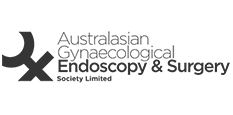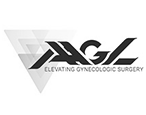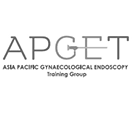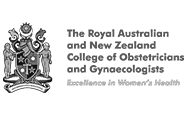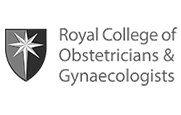Robotic / Laparoscopic Sacrocolpopexy With Or Without Hysterectomy
What is a robotic / laparoscopic sacrocolpopexy?
Sacrocolpopexy is an advanced surgical repair procedure for moderate to severe pelvic organ prolapse. Sacrocolpopexy is best suited for severe prolapse of the top of the vagina such as in uterine prolapse or vault prolapse in patients who have had a hysterectomy. Traditionally, sacrocolpopexy was performed through a large abdominal incision commonly referred to as a laparotomy or an open surgery. Sacrocolpopexy, like most surgical procedures, is now more commonly being performed minimally invasively via laparoscopy. Laparoscopic surgery, also known as “keyhole” surgery, is carried out through a series of small incisions with long thin instruments. Robotic surgery is the most advanced form of laparoscopic surgery. Laparoscopic surgery is preferred over open surgery for the proven benefits of less postoperative pain, shorter hospital admissions and faster recovery.
Open sacrocolpopexy was first reported in 1957 by HG Arthure and is recognised as one of the most effective procedures for treating upper vaginal prolapse. The procedure involves restoring the position of the top of the vagina by suspending it to the sacrum with a mesh strip. The modern variation of sacrocolpopexy aims to also treat anterior and posterior vaginal wall prolapses at the same time by placing the anterior and posterior arms of the mesh lower towards the vaginal opening. Therefore, the procedure will not only restore the top of vagina but also strengthen the anterior and posterior vaginal walls.
Variations of sacrocolpopexy based on uterine procedures are:
- Sacrohysteropexy: Preservation of uterus
- Sacrocervicopexy: Partial hysterectomy with preservation of cervix
- Sacrocolpopexy: Following prior or concurrent hysterectomy
Why sacrocolpopexy?
Sacrocolpopexy is one of three possible surgical procedures for upper vaginal prolapse, with the other two procedures being sacrospinous fixation and uterosacral ligament suspension. The latter two procedures rely on sutures placed on weakened tissue, whereas sacrocolpopexy uses a strip of strong but soft permanent mesh that is widely attach to the top of vagina on one end and firmly secured to the sacral bone on the other end. Comparative studies have consistently shown better outcomes with sacrocolpopexy. It is a more robust repair and is the procedure of choice when other repair procedures have failed. Traditionally, it was common to try a vaginal approach first, as sacrocolpopexy used to be performed as an open surgery with a large abdominal incision, resulting in more postoperative pain and longer recovery. However, as sacrocolpopexy is now performed minimally invasively and lately robotically, this stronger repair is being increasingly used as a first-choice procedure for severe prolapse. Sacrocolpopexy is often referred to as the “gold standard” for vault prolapse because of its superior long-term results. Dr Chou has been performing laparoscopic sacrocolpopexy since 2005 and is increasingly using robotic platform to perform sacrocolpopexy.
Whilst sacrocolpopexy is extremely successful in restoring the upper vaginal support with a cure rate of 95%, there remains a chance of prolapse recurring at the anterior and posterior vaginal walls as pressure is redirected elsewhere following sacrocolpopexy.
Why is hysterectomy recommended with sacrocolpopexy?
Sacrocolpopexy can be performed with or without a hysterectomy when the uterus is still present:
- Without a hysterectomy
- With a subtotal hysterectomy (Cervix is preserved)
- With a total hysterectomy (Cervix is removed)
If the patient still wishes to fall pregnant, the procedure is performed without a hysterectomy. However if this is not the case, especially in the presence of severe prolapse, the uterus is usually removed as part of prolapse surgery. Removal of the uterus usually allows for better repair and eliminates the risk of later developing uterine related problems. Subtotal hysterectomy is when the cervix, the lower part of the uterus is kept. One of the reported benefits of performing a subtotal hysterectomy with sacrocolpopexy is a reduced chance of mesh erosion. This however is weighed up against the risk of developing cervical pathology in the future, thus requiring ongoing cervical screening. By preserving the cervix, the body of the uterus needs to be removed from the abdomen by morcellation, which otherwise could have been removed through the vagina. Morcellation carries a very small risk of cutting into a uterus that may have unsuspected uterine cancer which could upstage the condition and worsen the prognosis. Furthermore, future surgery in case where the uterus or the cervix is kept may be more difficult. Removal of the whole uterus removes the risks of uterine and cervical cancer without needing to have ongoing Cervical Screening Tests. There is also evidence of better long-term result with concurrent hysterectomy. Our earlier result showed that the risks of mesh erosion with total hysterectomy with sacrocolpopexy was around 2% which have significantly reduced by the use of modern “ultra-light” mesh and improved surgical techniques. Healthy ovaries are not removed until the age of 65.
Sacrocolpopexy combined with incontinence procedure and vaginal repair
Some women may have prolapse and stress incontinence therefore needing both a prolapse procedure as well as a continence procedure. Sacrocolpopexy is for repairing prolapse and a mid-urethral sling which is a continence procedure can be combined and be performed at the same operation.
Sacrocolpopexy is particularly effective for restoring the very top of vagina called vaginal vault. However, by extending the vaginal ends of the mesh further towards the vaginal opening, anterior and posterior vaginal walls can also be reinformed. This can eliminate the need for concurrent vaginal native tissue suture plication repair. However, if there is significant weakness at the lower 1/3 of the vagina, close to the vaginal opening, a concurrent vaginal procedure such as posterior colpoperineorrhaphy would be the best way to repair it
What are the possible risks with Sacrocolpopexy?
There are the general risks with any surgery including reaction to anaesthesia, wound infection, excessive bleeding, injury to neighboring structures and clots forming in the leg that may travel to the lungs.
Possible risks from sacrocolpopexy include:
- Urinary infection (2-5%)
- Urinary leakage, usually transient with improvement over time but may require additional procedure (5%)
- Change in bowel habits
- Pain during intercourse or generally (2-3%)
- Injury to neighboring structures such as bladder, bowel, blood vessels and nerves (<1%)
- Mesh related issues including mesh erosion and infection (2-3%)
- Prolapse recurring
What’s recovery like following robotic sacrocolpopexy?
Hospital stays following sacrocolpopexy is usually 2 nights. The recovery from surgery is usually 4 weeks but it is very important to avoiding heavy lifting for up to 3 months. It is recommended to limit lifting to no more than 5kg (a bottle of 2L and a bottle of 3L milk) if possible. Avoiding heavy lifting will minimise straining of the sutures that are holding the repair while it’s healing. Following discharge a follow up visit around 4-6 weeks will be made to check on your recovery and discuss any issue.
There will be pain and discomfort around the pelvis and possibly some alteration in voiding and bowel motions. Liberal use of painkiller is encouraged as it will facilitate getting out of bed and be active. It is recommended to avoid driving for 1-2 weeks and abstain from sexual intercourse for 3 months. As previously mentioned heavy lifting should be limited to no more than 5kg for 3months. One should be careful with heavy lifting thereafter to minimise prolapse recurrence. High impact exercise and sports should also be avoided for 3 months but one should be active with regular walks soon after the surgery to speed up recovery and minimise postoperative complication like developing clots in the legs.
Bowel motions should be carefully monitored to ensure regular movements of soft stool and avoid developing constipation. It is customary practice to be prescribed prophylactic mild aperient (Normacol or Movicol) to counteract the tendency for constipation following surgery. High fiber diet with adequate daily fluid intake (1.5L) is important.
Some vaginal loss is common after sacrocolpopexy particularly if a hysterectomy was performed at the same time. Sometime there may be an increase in the vaginal loss around 1-2 weeks following surgery as the swelling around the vaginal wound subside which increases the gaps between the sutures allowing drainage of retained fluid. This is common and should settle once the fluid completely drains out. If there is heavier bleeding with pain and temperature it could be signs of infection and you should contact our surgery promptly to be seen quickly and be started on antibiotics.
In addition to Robotic / Laparoscopic sacrocolpopexy, sometime an additional repair from the vaginal approach is also required. In such instance you may feel the vaginal sutures, which can take up to 3-4 weeks to dissolve before falling off.
What’s the recovery like following a Robotic / Laparoscopic Sacrocolpopexy?
The time it takes to recover from a robotic / laparoscopic sacrocolpopexy with or without a hysterectomy varies for each individual but averages around 4-6 weeks. Some people may feel well enough after 2 weeks. Following surgery, there will be postoperative pain which should be adequately managed with oral painkillers. Pain is often experience around the pelvic region, at the skin incision sites, under the rib cage and around the shoulder tip. Regular use of painkillers as required is encouraged, not only to reduce discomfort but also to facilitate early mobilisation. Physical activity plays an important role in minimising postoperative complications including the formation of blood clots in the leg and chest infections. Recovery will also be faster with early resumption of physical activity.
As your body expends a lot of energy whilst healing internal wounds, it is very common to feel lethargic and easily fatigued for a number of weeks. You will fully regain your energy and stamina over time.
There are no dietary restrictions post-surgery however the bowels often slow down for a brief period of time due to the pain medications and decrease in physical activity. One is therefore encouraged to maintain a high fiber diet with adequate hydration in order to avoid constipation. The use of mild aperients may be required.
Vaginal discharge can be present but is usually minimal. If you had a hysterectomy with the sacrocolpopexy, there is often a slight increase in vaginal discharge or bleeding 7-10 days after surgery. This is due to reduced swelling around the suture line at the top of the vagina resulting in slightly larger gaps between the sutures through which fluid inside the abdomen can drain out. This is normal and should settle on its own. It can look like bleeding, but no further action is required. There is a small chance of infection which can cause symptoms such as heavy bleeding or discharge, pain and fever. You should contact your doctor promptly if this occurs as it may require antibiotic treatment.
Heavy lifting and strenuous physical activities should be avoided for 3 months following a sacrocolpopexy. Driving should be avoided for the first 1-2 weeks, and you also should not drive whilst under the sedative influence of stronger painkillers.
In most cases, you will be able to return to office work in 4 weeks. For more physical work you may require 4-6 weeks.
Sexual intercourse should be avoided for the first 3 months following surgery.
Helpful Links:
Patient information on Sacrocolpopexy from the International Urogynecology Association
Patient information on Sacrocolpopexy from the Intuitive Da Vinci System website


